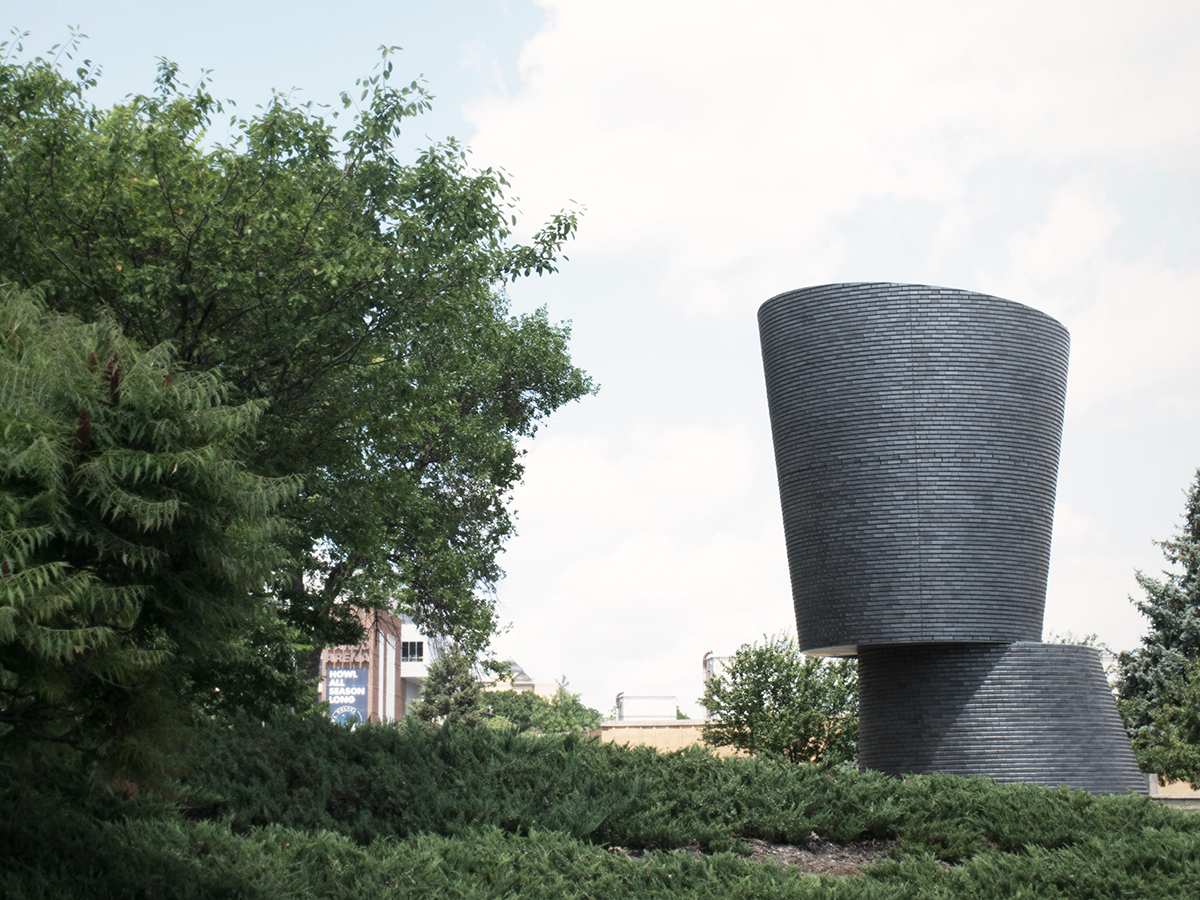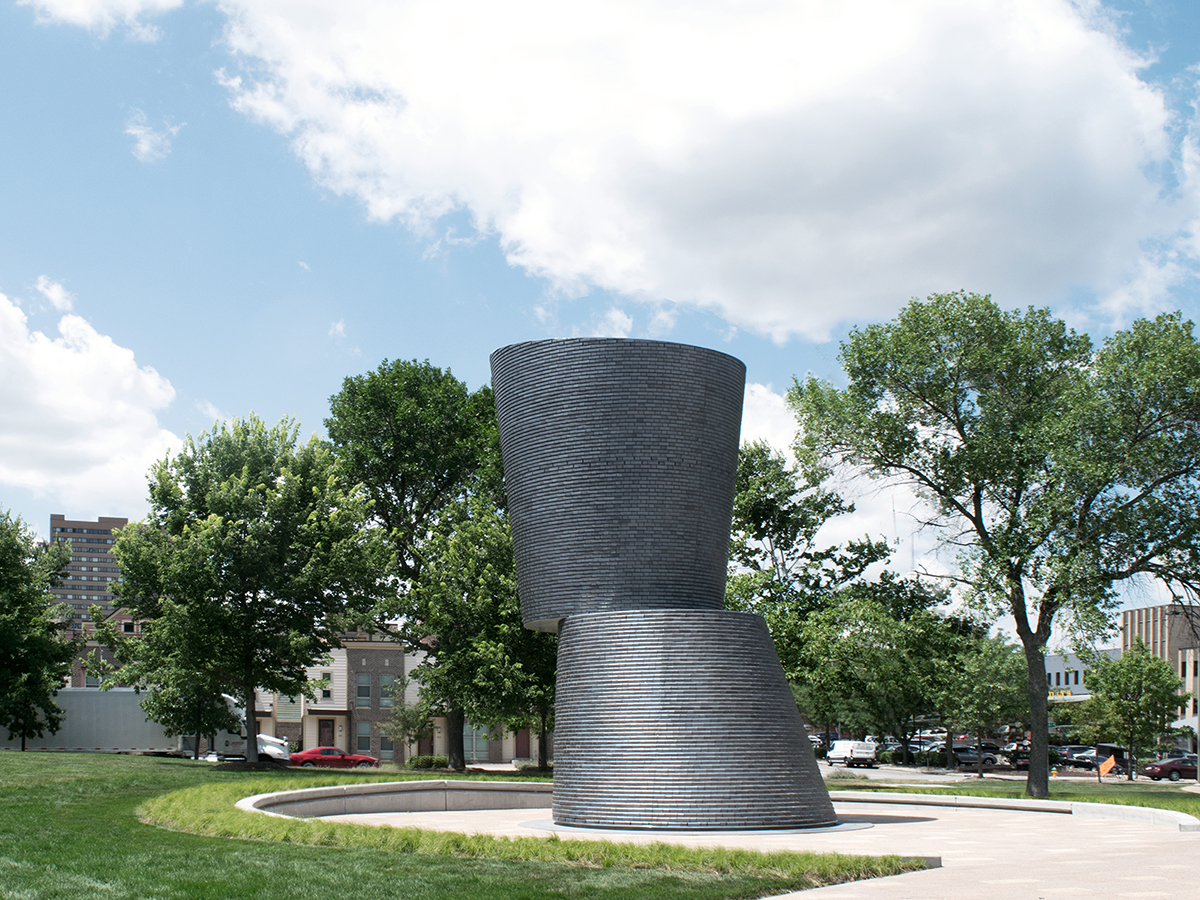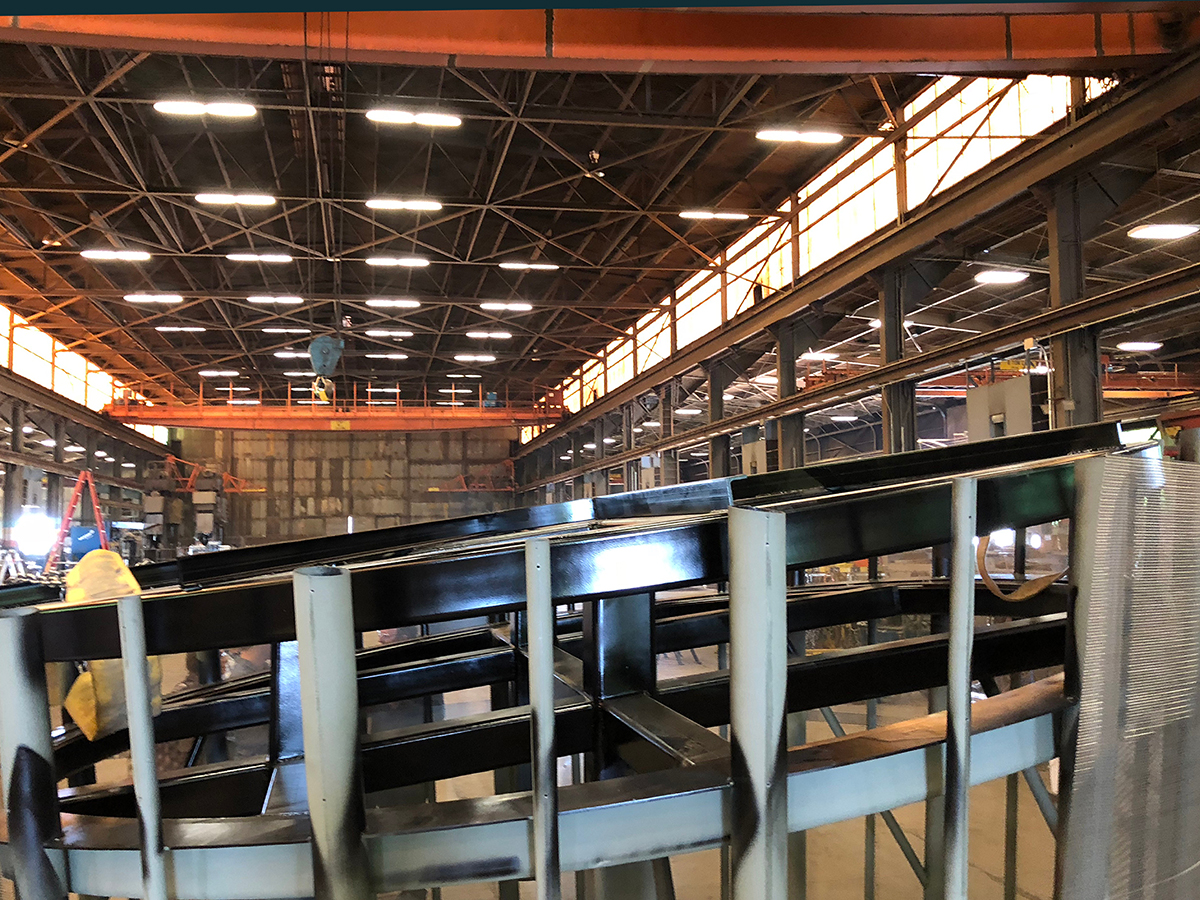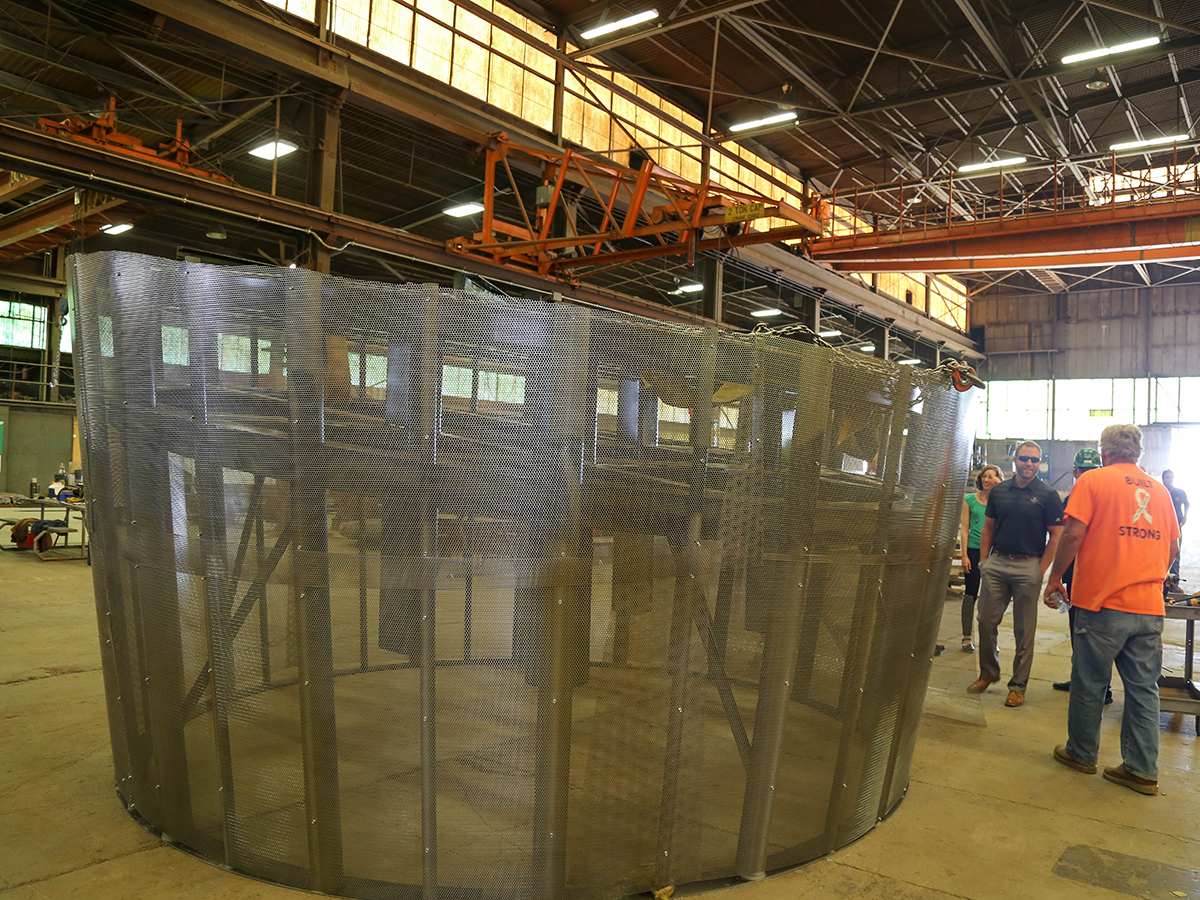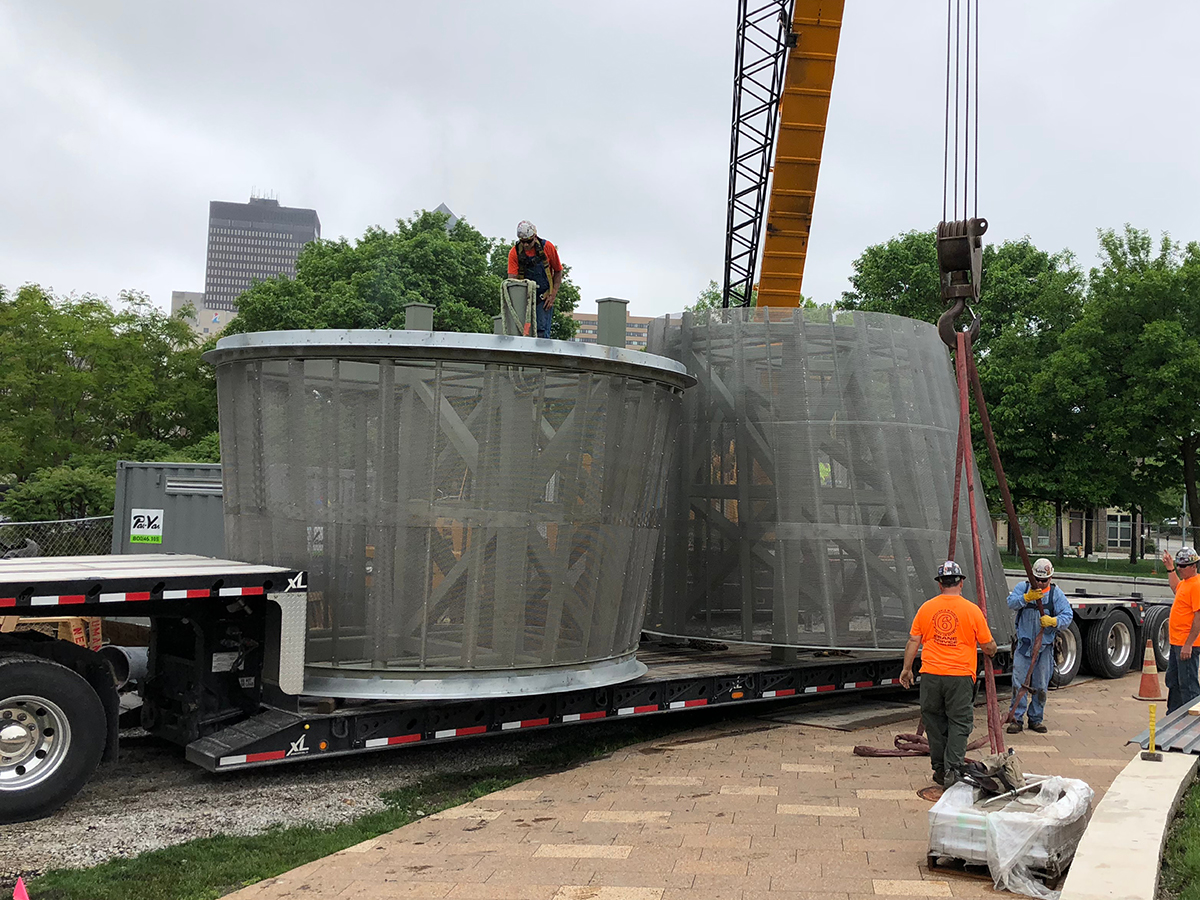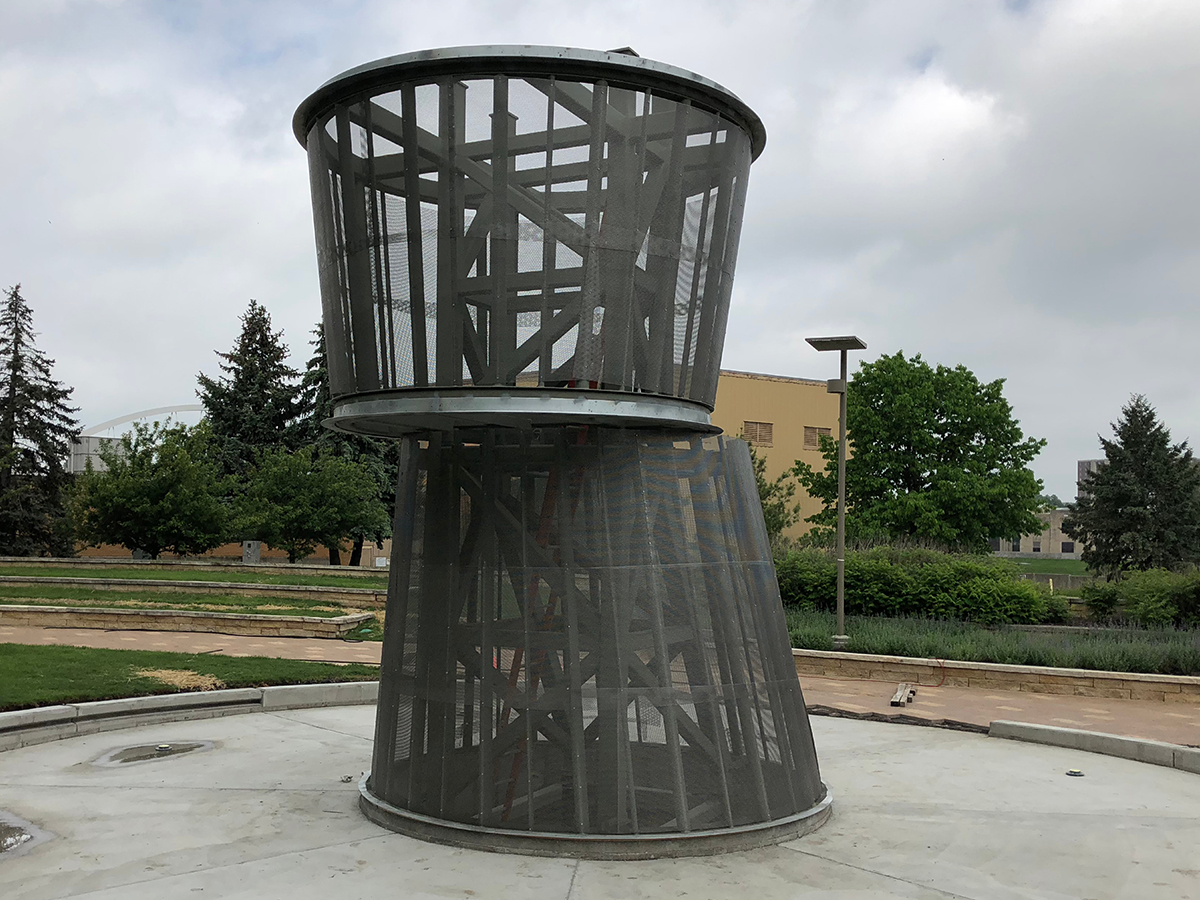AISC
A Monumental Journey
Merit Award - Sculptures/Art Installations/Non-Building Structures
Steel takes a back seat in this structure as far as being the face and plays the humble role of supporting the greater cause. Although steel is doing the heavy lifting in this monument, there is a greater message that is meant to be the focus and that is civil rights, justice, and equality. And this monument, with the support of steel, relays that message so beautifully. —2021 IDEAS² Judge Maysa Kantner, Atlanta Structural Steel Specialist, AISC
A Monumental Journey, a sculpture by renowned artist Kerry James Marshall, celebrates the legacy of African American lawyers, who, in 1925, founded the National Bar Association, dedicated to civil rights, justice, and equality in the legal system.
The architect collaborated with artist Kerry James Marshall to achieve the colossal, geometric sculpture. The shape is inspired by the form of the African talking drums, with one-drum precariously stacked upon the other, representing the notion of communication among diverse people and a legal system that, while not perfect, strives to be balanced. The sculpture stands 30 ft tall, embodying a sense of monumentality.
Located in Des Moines, Iowa, the sculpture is made of bricks to represent the feeling of weight and balance expressed in the piece. The stacking method of laying bricks also relates to the overall composition. The manganese iron spot brick chosen has a rich texture and tones of grey with a subtle shine due to the iron in the clay.
An impressive steel structure was fabricated to support the brick within this complicated tapered and suspended shape. The steel structure provided two advantages in the overall process: It allowed the masonry contractor to have a frame to follow while laying the bricks, and it gave a high level of precision since the structure was built off-site in sections.
A detailed 3D model of the steel structure was shared between the architect, engineer, and steel fabricator. Because of the cantilevered and heavy nature of the sculpture, multiple coordination meetings were set up to discuss challenges, such as how to divide the structure and how to achieve an uncomplicated expression of details and connections. Ultimately, the structure was modeled in three sections. The middle truss provides the main point of attachment, and special contour plates were designed to create a continuous frame on the exterior. The last section is the only exposed steel construction since it extends above the roof of the sculpture. The top section also supports ring metal plates that are aligned flush to the top edge of the sculpture.
The ring plates were the only visible element at the start and end of the brick construction. They were laser-cut and made of galvanized steel, as was the rest of the overall structure. At the interconnection between the two volumes, a thin sheet of brushed stainless steel was attached underneath the upper drum. All the visible details where the steel and brick meet each other were kept to a simple and effective aesthetic. The exterior structural frame is made of round hollow structural sections (HSS) that follow the general geometry of the sculpture. Finally, the frame is wrapped in a perforated sheet metal against which the bricks were set.
To coordinate brick installation, each brick was modeled into a drawing software that explored the best pattern solutions and laying starting points, and each was custom-made and hand-cut in order to be used in this application. The short edges of the bricks were shaved to follow their circular configuration, while the corner edges were trimmed to smooth the exterior geometry of the sculpture.
Steel facilitated fast-paced fabrication and erection, meeting the requirements for such an intricate geometry in a timely manner. And all parties involved in the construction were local, making the project a success story for the regional construction community.
For more on this project, see the article “What’s Cool in Steel” in the August 2019 issue of Modern Steel Construction.
Steel fabricator: Johnson Machine Works, Chariton, Iowa *AISC Member* *AISC Certified Fabricator*
Bender-roller: Albina Co., Inc., Tualatin, Ore. *AISC Member*
Structural engineer: KPFF Consulting Engineers, Des Moines
Architect: substance, Des Moines
General contractor: Neumann Brothers, Des Moines
Owner: Greater Des Moines Public Art Foundation, Des Moines, Iowa
- Project Category: Year 2021
- Location: Des Moines, IA
- Year Completed: 2018
- Submitting Firm: substance
- Photo Credit: substance

